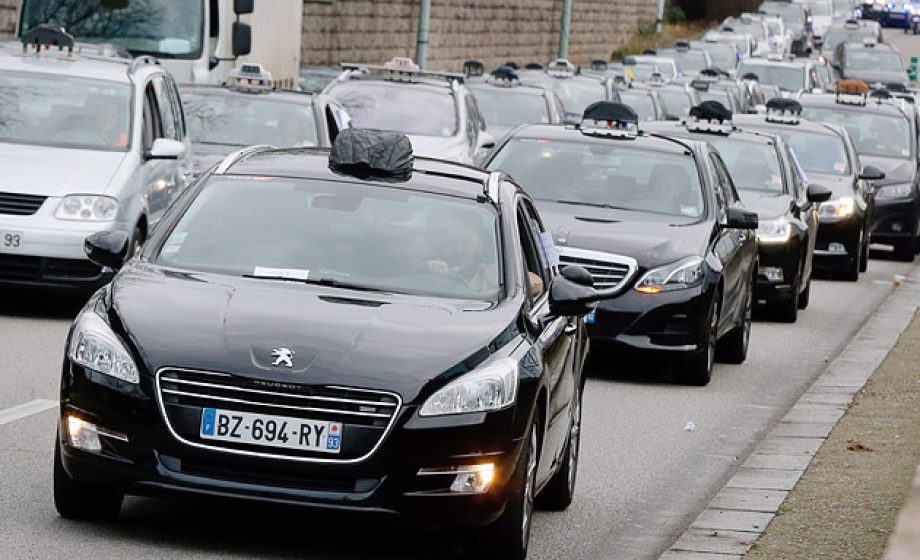
As a voice comes over the crackly speakers of my London/Paris Eurostar train welcoming me to Paris, I’ve already got my smartphone out and I’ve geolocalized myself on Uber where I’d like to be picked up just in front of the train station. It’s become more than a habit for me to anticipate my arrival, as Uber has become not only an integral part of my urban transportation, but’s also become something I must plan around. Let me explain.
Uber’s success in France hasn’t been atypical – it has confronted with local taxi authorities, has lobbied the government for chauffeur-friendly regulation, and has seen local rivals, like SnapCar, grow up around the ecosystem that it has fostered.
Currently in France, there is so much legislation in process – everything from banning Uber from using geolocalization to changing their receipts – that it’s hard to keep track of what is what. Speaking with former Atlas Venture director and Uber’s newest Paris GM Thibaud Simphal (I guess that’s change #1), I learned that Uber’s biggest problem today is getting new drivers:
“The Government has been freezing new VTC (chauffeured cars) licences since Feb 2014 while a taxi/VTC mediation led by Thomas Thévenoud (a Member of Parliament) was happening. This has resulted in several thousands of drivers not obtaining their VTC licence over the past 6 months and being prevented from working, and therefore in Uber not being able to onboard as many drivers as we could have on the network.” – Thibaud Simphal
The “mediation” in question has been summarized in a draft bill led by Socialist parliament member Thomas Thévenoud, who’s propositions include the following:
- A State-developer, free geolocalization service for Taxi’s
- A ban on VTC Apps (Uber, Snapcar, etc.) from geolocalizing their drivers for customers.
- A ban on VTC drivers to park at airports or train stations
- A requirement for all taxi’s to accept Debit/Credit Card as a payment method
The bill is set to be examined by the National Assembly in September – for the moment, almost everything is up in the air, but Simphal says Uber has to be ready for another “15-minute law.”
In the meantime, Uber has counteracted the frozen VTC licenses with the timely release of UberPop, which came within days of the announcement of the license freeze; however, as any marketplace-owner knows, the inability to grow supply limits the growth of demand.
Uber has a growing problem with its existing drivers.
The first friction point I encounter comes with ordering an Uber, namely that between the time where I geolocalize my position to the point of ordering an Uber (two clicks on my screen), I often find that the closest driver is not the driver who accepts my trip.
Of course, I understand how ‘on-demand’ work, and, as Simphal pointed out during our email exchange, this comes more often when there is high-demand; however, when my ETA changes from 3 minutes to 16 minutes, the desire to use an Uber (instead of a taxi or metro) changes, and if you’re not paying attention, Uber charges an up to 10€ cancellation charge if you cancel more than 5 minutes after ordering (i.e: when you realize your Uber isn’t coming in 3 minutes as you initially thought). Simphal says the solution is unfreezing VTC licenses; however, I think a simple product design switch could make the experience more transparent, and result in less cancelled rides (charge or no charge).
Victim of their own success
Any frequent Uber user knows that every Uber driver backs multiple chargers for smartphones (part of their customer-centric attitude); however, Uber drivers also carry multiple phones. One for each chauffeur service, many of which are non-exclusive for drivers. A habit I’ve seen recently develop is for Uber drivers to peruse ride offers on other services while driving with me in the car, normally towards the end of the ride, in anticipation of dropping me off – sometimes even accepting rides before I’m out of the car.
This is strictly against Uber’s policy, which says that, for safety and customer service reasons, Uber drivers are not allowed to accept overlapping rides. Uber explicitly disables their functionality in their own app; however, there’s virtually no way to policy drivers to see if they are using multiple services at the same time, save for some sort of inter-app partnership.
As a customer, this means that, when I call for an Uber, I often observe drivers continue to drive for blocks, clearly heading to another destination before turning to come get me. Simphal defends the behavior, saying often drivers can’t make U-turns immediately, so they appear to be driving in the opposite direction; however, given that I can watch the driver on Uber’s map driving through the city, it’s pretty easy to see when someone doesn’t make a turn that would lead them to you.
I’m not too worried about government legislation, nor the frozen VTC licenses – this is the natural friction that comes with disruption; however, as I roll into Gare du Nord in Paris, I have become accustomed to anticipating an app with friction in the customer experience – unclear ETAs, drivers accepting multiple pick-ups at once – and this may be the bigger than any legislative threat to Uber. It’s an attack on customer perception.

